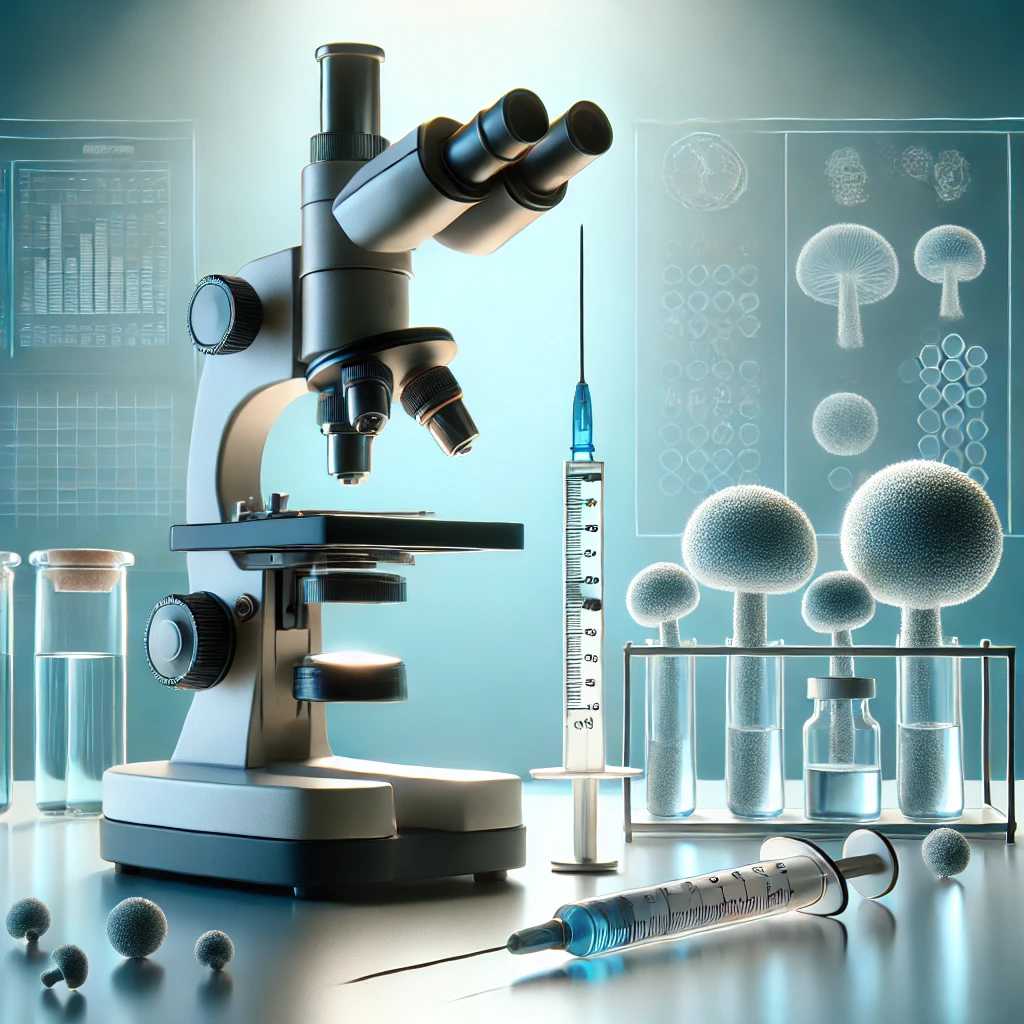Mushroom Spores Under the Microscope: What You Need to Know
Why Study Mushroom Spores Under a Microscope?
Microscopic spore analysis is one of the most reliable methods for identifying mushroom species. Since spores are too small to be seen with the naked eye, a microscope allows researchers to analyze key characteristics such as:
- Shape – Spores can be spherical, oval, elliptical, or uniquely shaped.
- Size – Measured in microns, spore size varies between species.
- Color – Spore prints reveal colors ranging from white to black, brown, purple, or even pink.
- Surface Texture – Some spores are smooth, while others have warts, ridges, or other microscopic features.
- Reactions to Stains – Certain chemicals can help differentiate spores under the microscope.
How to Prepare Mushroom Spores for Microscopic Study
To observe mushroom spores effectively, you need a properly prepared microscope slide. Here’s how:
Equipment Required:
- A compound microscope capable of at least 400x magnification.
- Glass slides and cover slips.
- Spore samples from a spore print, spore syringe, spore swab or directly from a mushroom cap.
- A pipette or dropper for adding water or staining solutions.
- Staining solutions such as Melzer’s reagent to highlight specific spore structures.
Step-by-Step Process:
1. Gathering the Spores
- Using a Spore Print – Gently scrape a small portion of spores onto a clean slide.
- Using a Spore Syringe – Place a tiny drop of spore solution onto the slide.
- Using a Spore Swab – Roll the swab lightly onto the slide surface to transfer spores.
2. Adding a Staining Agent (Optional)
Certain chemical stains help highlight spore details:
- Melzer’s Reagent – Reacts with amyloid spores, turning them blue-black.
- Congo Red – Enhances contrast for better visibility.
- KOH (Potassium Hydroxide) – Clears debris and improves color contrast.
3. Placing the Coverslip
- Gently lower a coverslip over the spore sample to avoid trapping air bubbles.
- Apply light pressure to spread the spores evenly.
4. Adjusting the Microscope
- Start with low magnification (40x) to locate the spores.
- Increase to 400x or 1000x for detailed study.
- Adjust lighting and focus to enhance clarity.
Recommended Microscope for Viewing Mushroom Spores
What Researchers Look for in Spores
When analyzing spores, researchers look for several distinguishing features:
Spore ornamentation – Warts, ridges, and spines can be diagnostic for some species.
Spore germination – Some spores require specific conditions to germinate, offering clues about their habitat.
Spore reactions – Chemical stains like Melzer’s reagent help determine if spores are amyloid (turn blue-black), dextrinoid (turn reddish-brown), or inamyloid (no reaction).
Basidia and cystidia – Structures on the gills that produce spores, further aiding identification.
Applications of Spore Microscopy
Studying spores under a microscope has various applications, including:
- Taxonomy and classification – Helps differentiate between closely related species.
- Fungal biodiversity studies – Contributes to scientific research and conservation efforts.
- Quality control – Ensures the purity of spore samples in laboratory settings.
- Amateur mycology – Assists mushroom enthusiasts in species identification.
Further Reading
For those interested in diving deeper into spore microscopy, check out these excellent resources:
Mushroom Observer – https://mushroomobserver.org
MycoBank – https://www.mycobank.org
iNaturalist Fungal Database – https://www.inaturalist.org
The Shroomery Microscopy Forum – https://www.shroomery.org/forums/postlist.php/Board/1
Fungi Perfecti Educational Resources – https://fungi.com/pages/research
Exploring the world of mushroom spores under the microscope is a rewarding experience that opens up new avenues of discovery. Whether you’re identifying species or contributing to scientific research, the microscopic study of spores is a crucial skill in mycology.
Final Thoughts
Studying mushroom spores under a microscope opens up a fascinating world of discovery. Whether you’re identifying species, analyzing genetic traits, or simply admiring their intricate structures, proper microscopy techniques will enhance your understanding of fungal biology. By following this guide, you’ll be well-equipped to conduct detailed and rewarding spore research.
🔹 Recommended Source: ShroomSpores.co.uk offers lab-tested spore syringes, prints, and swabs for microscopy and taxonomy research.
🔍 Want to Learn More? Check out our other guides:
📌 How to Store Mushroom Spores for Long-Term Viability
📌 Spore Prints vs. Spore Syringes: Which One Is Right for You?
Happy researching!
